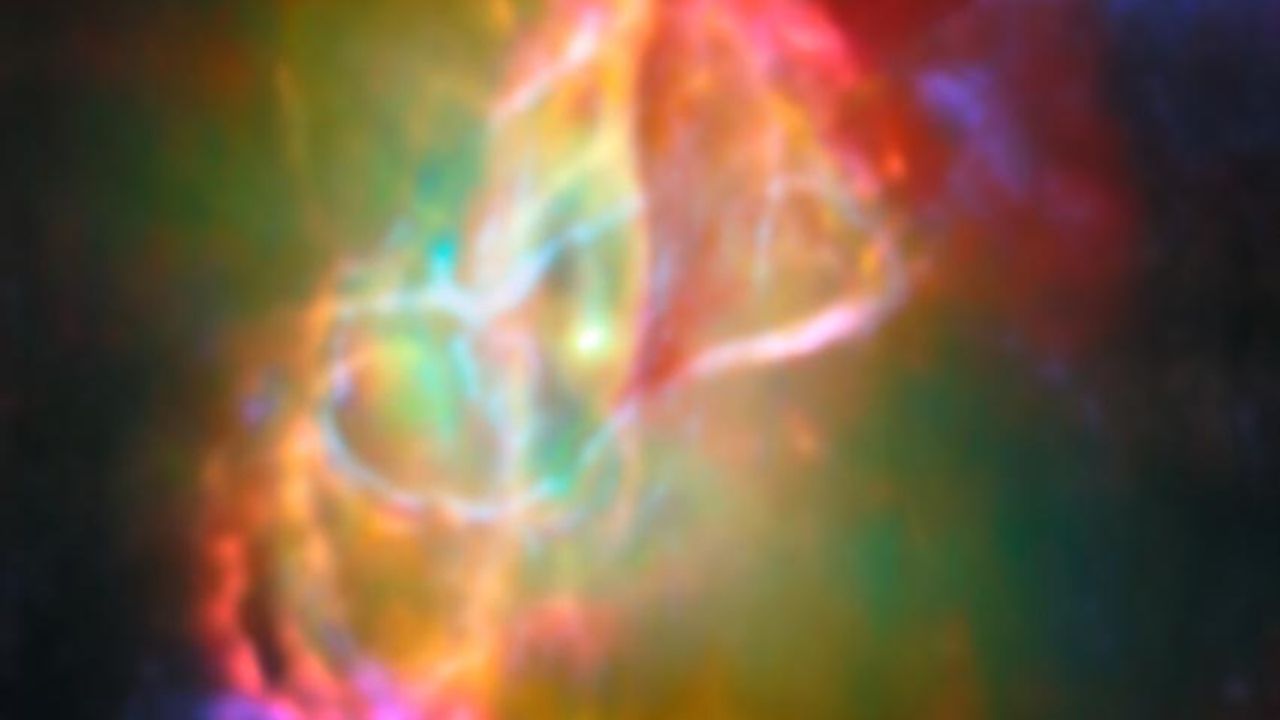The James Webb Space Telescope (JWST) has made a groundbreaking discovery by observing the formation of cosmic dust particles that are crucial for building planets. This marks the first time such processes have been documented around a dead star, specifically in the Butterfly Nebula, also known as NGC 6302, which is located approximately 3,400 light-years away in the constellation of Scorpius.
Mikako Matsuura, an astronomer from Cardiff University, led the observations and emphasized the significance of this discovery. “This discovery is a big step forward in understanding how the basic materials of planets come together,” she stated. The Butterfly Nebula is classified as a planetary nebula, a phenomenon that occurs when a star similar to our sun exhausts its hydrogen fuel and dies. The outer layers of the star are expelled into space, forming the nebula, while the core collapses into a white dwarf, which in this case radiates at an astonishing 220,000 degrees Celsius (396,000 degrees Fahrenheit).
JWST’s Innovative Imaging Techniques
The latest JWST image was captured using its Mid-Infrared Instrument (MIRI) and supplemented with data from the Atacama Large Millimeter/submillimeter Array (ALMA). This image specifically focuses on the central torus of dust within the nebula. Typically, interstellar dust particles measure around 0.1 microns, but the MIRI detected larger grains of crystalline silicate dust, measuring up to one millionth of a meter. Although this is still small, it is significantly larger than typical interstellar grains and more comparable to those found in regions that are actively forming stars and planets.
These larger dust grains are essential as they indicate the early stages of planet formation. In star-forming regions, such dust can accumulate in disks around young stars, coalescing into larger bodies that eventually become planets. The discovery of these grains in the Butterfly Nebula suggests a crucial phase in the planet-building process.
Understanding Cosmic Dust Formation
The dust within molecular gas clouds, which are vital for new star systems, originates from the remnants of previous generations of stars. As this dust disperses into interstellar space, it integrates into the gas clouds that form new stars. Despite this understanding, the mechanisms behind the growth of larger dust grains had remained unclear until now.
“For years, scientists have debated how cosmic dust forms in space,” explained Matsuura. “But now, with the help of the powerful James Webb Space Telescope, we may finally have a clearer picture.” The size of the dust grains observed suggests they have been growing over time, aided by chemical reactions driven by the intense heat of the white dwarf at the nebula’s center.
The JWST observations also revealed the presence of quartz crystals, showcasing the diversity of materials formed within the nebula. “We were able to see both cool gemstones formed in calm, long-lasting zones and fiery grime created in violent, fast-moving parts of space, all within a single object,” Matsuura noted.
Additionally, the JWST detected polycyclic aromatic hydrocarbons (PAHs), carbon-based molecules that are found in everyday items on Earth, such as burnt toast and car exhaust. These molecules are abundant in deep space and are thought to play a significant role in the chemistry of star and planet formation, potentially even contributing to prebiotic chemistry necessary for life.
The PAHs in the Butterfly Nebula exist in flat, ring-like structures, likely formed from interactions between particle bubbles expelled by the white dwarf and surrounding gas. Over the course of tens of thousands of years, the brilliance of the Butterfly Nebula will gradually dissipate into space, with the PAHs, quartz grains, and other molecules created from the star’s death drifting among the stars, awaiting integration into new gas clouds that could give rise to future star and planet systems.
The findings from the JWST’s observations of the Butterfly Nebula were published on August 27 in the journal Monthly Notices of the Royal Astronomical Society, marking a significant advancement in our understanding of cosmic dust and its role in the universe.





































































